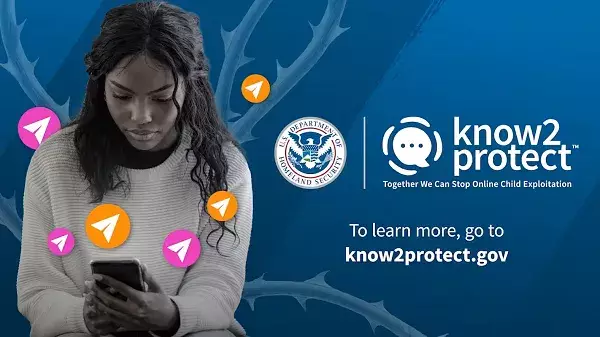In an era where social media has become an indispensable part of youth culture, the risks associated with online interactions have proliferated. Snapchat, a platform synonymous with genial communication among teens, has taken a significant step to address the dark underbelly of child sexual exploitation and abuse (CSEA) through its involvement in the U.S. Department of Homeland Security’s “Know2Protect” program. Launched in April of the previous year, this initiative not only seeks to raise awareness among young users about the perils lurking online but also provides essential tools and support systems to combat these threats.
Given the increasing incidents of online grooming and exploitation, Snapchat’s proactive measures are not just commendable; they are imperative. The stark statistics reveal a reality that should alarm parents, educators, and young people themselves about the necessity for such programs.
Unpacking the Numbers: What They Tell Us
Recent research spearheaded by Snapchat sheds light on the ongoing struggles that teenagers face in the digital world. Alarmingly, 24% of teens admitted to having shared intimate imagery—a figure that has stubbornly remained unchanged since last year. Even more concerning is that 33% have reported experiences of online grooming. However, there is a slight glimmer of hope, as the incidence of catfishing has dipped to 35%, albeit by just one percentage point.
The most disheartening revelation emerges when delving into the control young users feel over the content they share. A staggering 50% of those who shared intimate visuals found themselves losing control of that material, a fate that nearly two-thirds of teenage respondents (63%) echoed. This represents a troubling 13-point increase since the last research cycle. In essence, as digital landscapes become more treacherous, the onus is on platforms like Snapchat to create a safe passage for its younger users.
The Rise of Awareness: A Positive Shift?
Despite these daunting figures, there’s an upward trend in awareness regarding the “Know2Protect” initiative. Notably, 28% of participants recognized the campaign—a solid 17-point rise since the previous year. Perhaps even more encouraging is the finding that 89% reported the campaign spurred them to seek more information about online safety. This dramatic shift indicates that while many teens are still navigating the waves of risk, they are becoming increasingly informed and proactive about their online interactions.
Such awareness represents a crucial turning point in how younger generations engage with technology. Information is power, and equipping teens with the knowledge needed to navigate the perilous online landscape is vital to reducing the alarming statistics surrounding online exploitation and abuse.
Building Robust Safety Nets Within the App
Snapchat isn’t stopping at raising awareness. The application is actively implementing various protective measures aimed at safeguarding users. Among these steps is the integration of PhotoDNA, a technology using Google’s CSAI Match to identify and eliminate duplicates of known illegal images and videos, effectively acting as a safeguard against exploitation. Furthermore, Snapchat has amplified its in-app warnings to alert users about potential red flags, such as suspicious friend requests, enhancing digital vigilance among its community.
Another essential innovation is the expansion of its Family Center, which offers parental controls that empower guardians to monitor their children’s interactions, providing peace of mind in an often chaotic digital environment.
The Imperative for Continuous Evolution
Nevertheless, as Snapchat continues to bolster its defenses, the nature of online exploitation is evolving. The advent of advanced technologies such as AI deepfakes poses new challenges that require constant adaptation and vigilance. The platform’s ongoing commitment to updating its detection methods and enforcement capabilities is critical in ensuring it remains ahead of these threats.
Although the statistics might paint a bleak picture, the integration of the “Know2Protect” initiative and Snapchat’s innovative safety measures demonstrate an essential commitment to protecting vulnerable users. In a world where digital dangers are omnipresent, platforms must take on the mantle of responsibility to not only educate but actively defend their users against exploitation. Only then can we create a safer online environment for the next generation.

